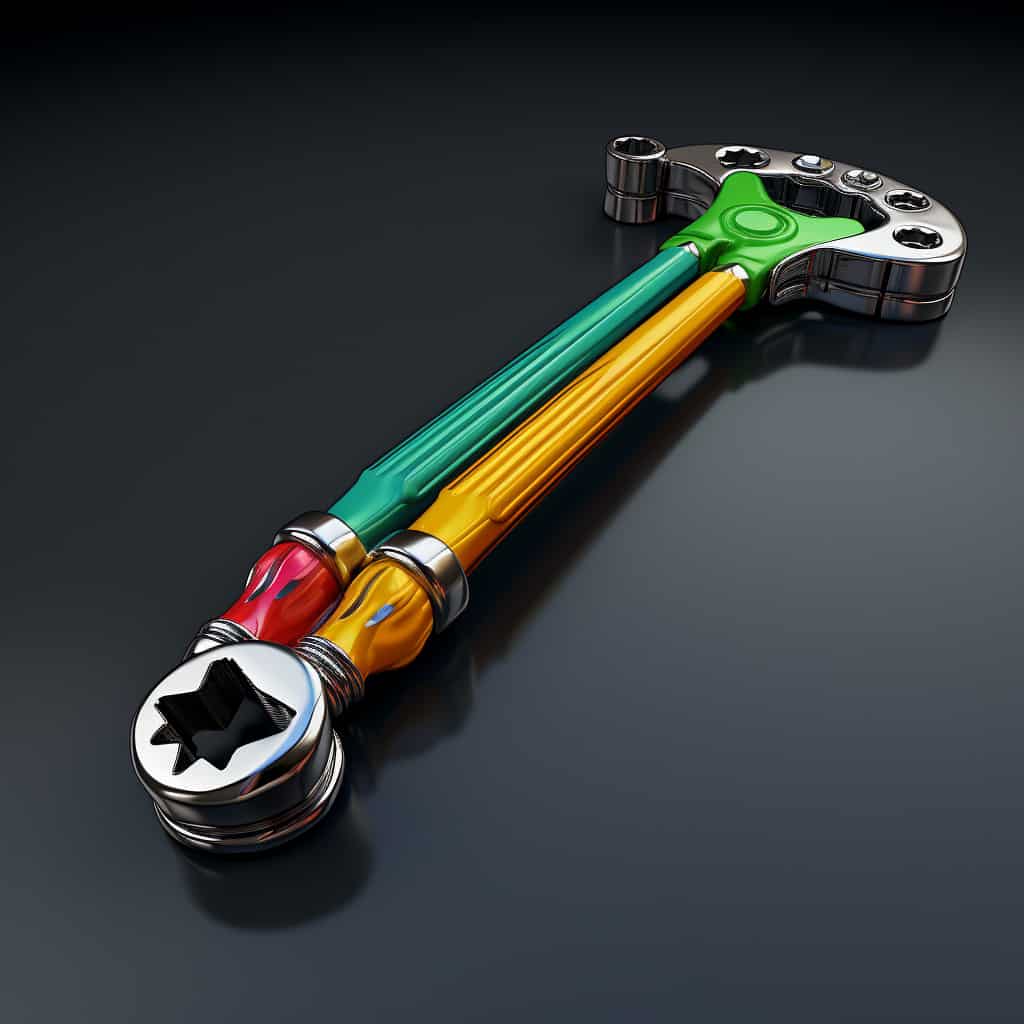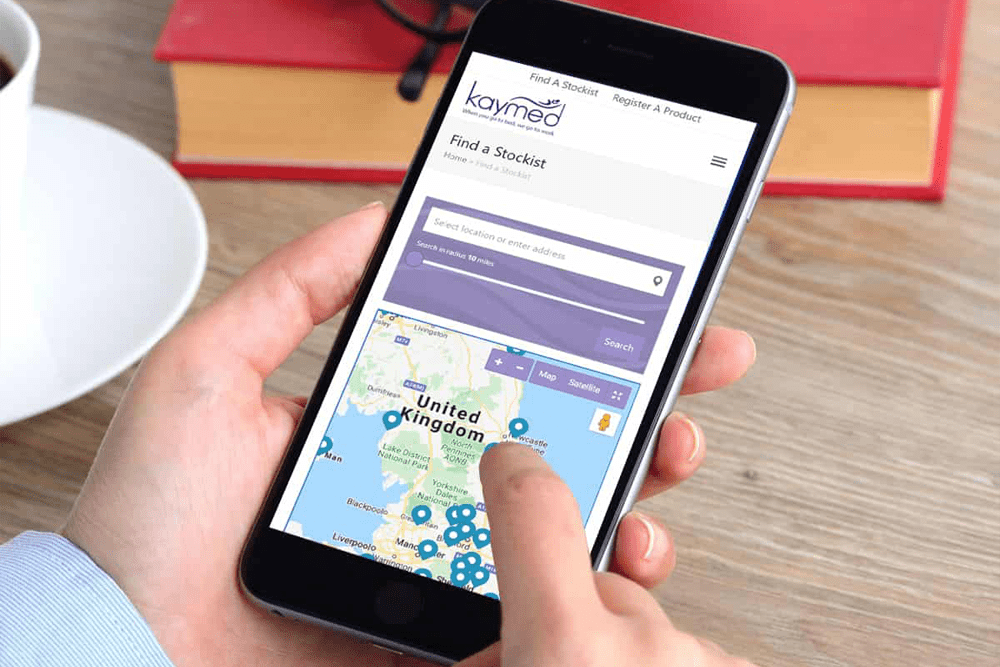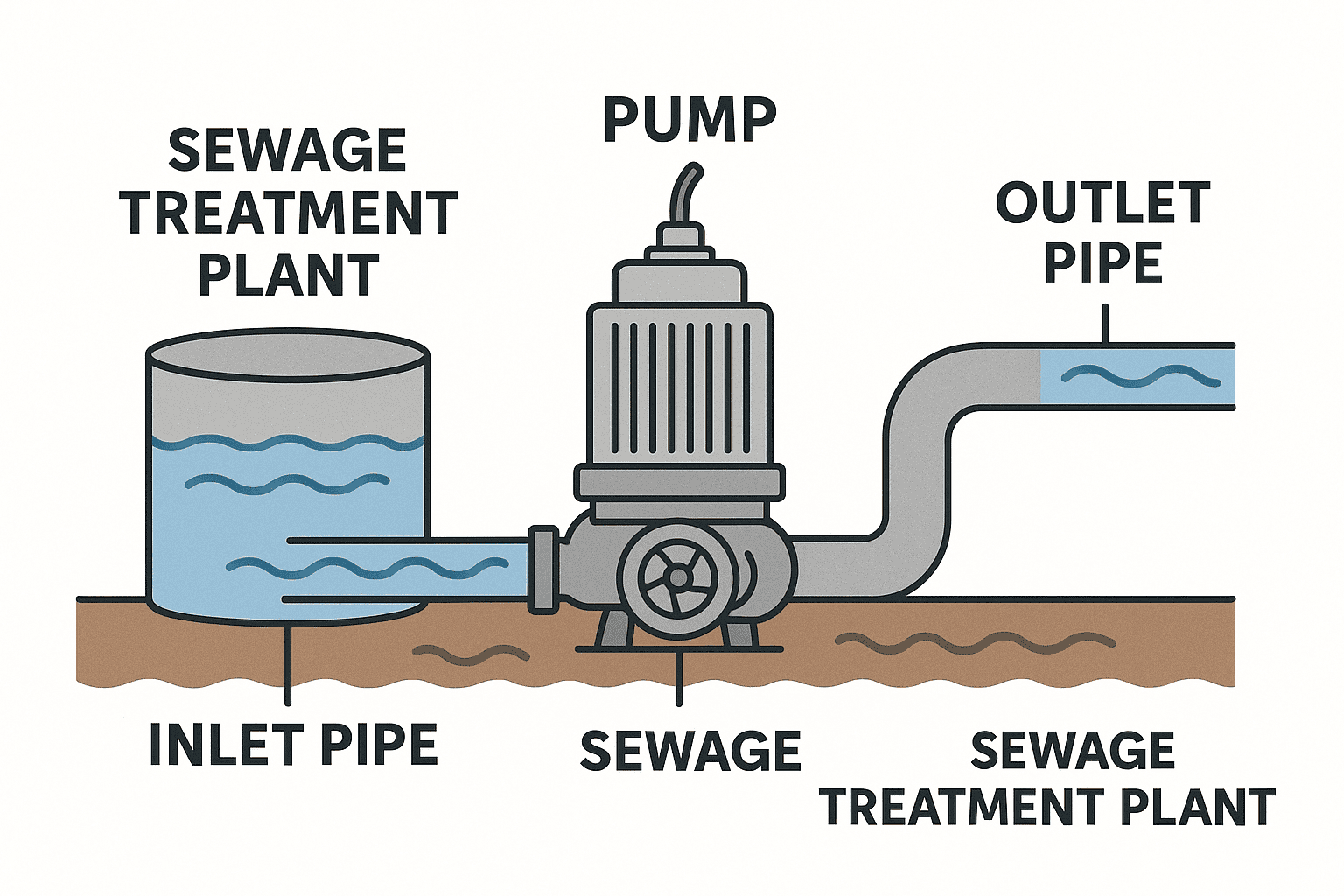Marketing is a critical activity in this article we will look at 4 key Manufacturing Marketing Ideas that can be implemented to help improve the effectiveness of your marketing. In the rapidly evolving landscape of the manufacturing industry, effective marketing strategies are crucial for companies aiming to stand out in a competitive market. With the advent of digital platforms and changing consumer behaviours, content marketing has emerged as a powerful tool for manufacturers to connect with their target audience on a deeper level.
This article dives into the realm of content marketing tailored specifically for manufacturing companies, exploring a range of strategies to captivate audiences, from creating manufacturer buyer personas to crafting compelling manufacturing case studies. Divided into four insightful elements, this article will provide actionable insights and creative ideas to revitalise your manufacturing company’s marketing approach:
1: Content Marketing Ideas for Manufacturing Companies In this section, we will explore innovative content marketing ideas designed to engage and educate your target audience. From leveraging the power of visual content to establishing a thought leadership platform through insightful articles, we’ll uncover ways to showcase your manufacturing expertise in a way that resonates with potential customers.
2: Creating Manufacturer Buyer Personas Understanding your audience is the cornerstone of effective marketing. In this section, we’ll delve into the process of creating detailed manufacturer buyer personas. By dissecting the traits, pain points, and motivations of your ideal customers, you can tailor your content and messaging to resonate more deeply and authentically, fostering stronger connections and driving conversions.
3: Manufacturing Blog Topic Ideas Blogs have emerged as a pivotal medium for sharing valuable information and establishing industry authority. This section will provide an array of manufacturing blog topic ideas that cater to the interests and concerns of your target audience. Whether it’s exploring emerging industry trends, discussing the latest technological advancements, or offering practical tips for optimising manufacturing processes, you’ll find inspiration to fuel your content calendar.
4: How to Create Manufacturing Case Studies Case studies serve as powerful testimonials to your company’s capabilities. In this section, we’ll guide you through the process of crafting compelling manufacturing case studies. You’ll learn how to structure your case studies effectively, highlight key challenges and solutions, and demonstrate tangible results, all while showcasing your company’s problem-solving prowess to potential clients.
As manufacturing companies navigate the dynamic landscape of digital marketing, mastering the art of content creation and engagement is paramount. Join us as we journey through these four sections, equipping you with the knowledge and strategies needed to elevate your manufacturing marketing efforts and position your company for sustained success in today’s competitive marketplace.
1: Content Marketing Ideas for Manufacturing Companies
Content marketing can be a powerful tool for SME manufacturing companies to establish their brand, engage with their target audience, and showcase their expertise in the industry. Here are some content marketing ideas that could help such companies enhance their online presence and build meaningful relationships with their customers:
1. Expert Industry Insights: Consider creating in-depth articles, whitepapers, or videos that delve into specific topics related to the manufacturing industry. These could cover trends, best practices, new technologies, or regulatory changes. Providing valuable insights into complex subjects can position your company as a thought leader and go-to resource for industry knowledge.
2. Product Demonstrations: Showcase your manufacturing process and products through videos or step-by-step guides. This helps potential customers understand the quality and uniqueness of your offerings, as well as the level of craftsmanship that goes into your products. Highlighting the features and benefits of your products can drive interest and inquiries.
3. Customer Success Stories: Share success stories and case studies of satisfied customers who have benefited from your manufacturing solutions. Highlight the challenges they faced, how your products or services helped overcome those challenges, and the positive outcomes they achieved. This not only demonstrates your expertise but also builds trust among potential customers.
4. How-to Guides and Tutorials: Create practical guides that address common problems or questions faced by your target audience. These could include step-by-step tutorials, troubleshooting guides, or maintenance tips related to your products or the manufacturing process. Providing useful information can establish your company as a valuable resource for customers.
5. Behind-the-Scenes Content: Give your audience a glimpse into the inner workings of your manufacturing process. This could involve sharing videos or blog posts that show the day-to-day operations, the skilled workforce, and the dedication that goes into creating your products. Humanizing your brand can create a stronger emotional connection with customers.
6. Educational Webinars: Host online webinars where you can discuss relevant industry topics, showcase your products, or provide training sessions. Webinars allow you to interact directly with your audience, answer their questions, and position your company as an authority in the field.
7. Infographics and Visual Content: Create visually appealing infographics that simplify complex concepts or data related to manufacturing. Visual content is easily shareable and can attract attention from a wider audience, including those who prefer quick and digestible information.
8. Industry News and Updates: Keep your audience informed about the latest industry news, trends, and advancements. Regularly publishing news articles or analysis pieces shows that your company is actively engaged with the industry and is committed to staying current.
9. Comparison and Buying Guides: Help your audience make informed decisions by creating comparison guides or buying guides that outline the key factors to consider when choosing manufacturing solutions. This can position your company as a trusted advisor and assist potential customers in making the right choices.
10. Collaborations and Partnerships: Collaborate with other businesses, industry experts, or influencers to create joint content. This can help you tap into new audiences and bring fresh perspectives to your content, while also reinforcing your credibility through association.
Remember, consistency is key in content marketing. Regularly updating your website, blog, and social media platforms with valuable content will help you stay top-of-mind with your target audience and establish your SME manufacturing company as a trusted authority in the industry.
2: Creating Manufacturer Buyer Personas
Creating buyer personas is a crucial step for SME manufacturers to develop effective and targeted marketing strategies. These detailed and semi-fictional representations of your ideal customers provide valuable insights into their behaviours, needs, motivations, and challenges. By understanding your buyers on a deeper level, you can tailor your marketing efforts to resonate with their preferences and drive more meaningful engagement.
To start the process, gather data from various sources such as customer surveys, website analytics, sales data, and market research. This information will help you identify common patterns and characteristics among your existing customer base. Look for trends in demographics, purchasing behaviours, pain points, and preferences. By analysing this data, you can begin to identify distinct groups of customers that share similar traits.
Once you’ve collected sufficient data, begin crafting your buyer personas. Give each persona a name, a brief background story, and include key demographic information such as age, gender, location, job title, and income level. However, don’t stop at surface-level details – delve deeper into their motivations, goals, and challenges related to your products. What drives them to seek your products? What obstacles do they face in their journey?
As an SME manufacturer, your buyer personas should also encompass the specific pain points and needs that your products address. If you produce industrial machinery, for example, one of your personas could be a plant manager focused on optimising production processes and minimising downtime. Understand their concerns and aspirations to tailor your marketing messaging accordingly.
Additionally, consider the preferred communication channels of each persona. Do they primarily use social media, email, industry forums, or trade shows to gather information? This knowledge will help you optimise your marketing distribution channels and touchpoints to reach them effectively.
Regularly update your buyer personas to reflect changes in the market, customer preferences, and emerging trends. Engage with your existing customers through surveys, interviews, and feedback mechanisms to stay current with their evolving needs and behaviours.
With well-defined and comprehensive buyer personas in hand, you can now create content and marketing campaigns that truly resonate with each persona. Craft messaging that addresses their pain points, highlights the benefits of your products, and showcases how your solutions can help them achieve their goals. By aligning your marketing efforts with the specific needs of your buyer personas, you’ll be well-positioned to foster stronger connections, drive conversions, and ultimately grow your SME manufacturing business.
3: Manufacturing blog topic ideas
As a SME manufacturer, creating informative and engaging blog content can help establish your expertise, build brand credibility, and connect with your target audience. Here are some blog topic ideas and approaches you could consider:
- Industry Trends and Insights: Stay ahead of the curve by writing about the latest trends in your industry. Discuss how these trends are impacting your niche and offer insights into how your SME is adapting to them. For example, you could explore the adoption of new manufacturing technologies, sustainability practices, or supply chain innovations.
- Product Development and Innovation: Showcase your expertise in product development by writing about the journey from concept to creation. Highlight how your SME approaches innovation, the challenges faced, and the solutions devised. Sharing case studies or success stories can provide valuable real-world examples of your capabilities.
- Behind-the-Scenes: Manufacturing Process: Take readers on a virtual tour of your manufacturing process. Explain the steps involved, the quality control measures you take, and the technologies you employ. This not only educates your audience but also instils confidence in your manufacturing capabilities.
- Customer Success Stories: Share stories of satisfied customers who have benefited from your products or services. Highlight their challenges, how your SME addressed them, and the positive outcomes achieved. Customer testimonials and before-after scenarios can add authenticity to your blog.
- Sustainability and Eco-Friendly Practices: If your SME is conscious of sustainability, write about your eco-friendly practices and initiatives. Discuss how your manufacturing processes contribute to a greener future and the steps you take to reduce waste, energy consumption, or carbon footprint.
- Collaborations and Partnerships: If you collaborate with other businesses or organizations, write about these partnerships. Explain how these collaborations enhance your products or services and provide value to your customers. This can also open doors to cross-promotion with your partners.
- Industry Regulations and Compliance: Manufacturing often comes with regulatory requirements. Write informative articles about compliance standards, safety measures, and industry regulations. This demonstrates your commitment to quality and responsible manufacturing.
- Comparative Analysis: Compare your products, manufacturing approaches, or technologies with others in the market. This approach can showcase your unique selling points and why potential customers should choose your SME over competitors.
- Employee Spotlight: Introduce your readers to key members of your team. Highlight their expertise, experiences, and contributions to your SME’s success. This humanises your brand and emphasises the expertise your team brings to the table.
- Problem-Solving Guides: Create how-to guides or problem-solving articles related to your products. Address common issues customers might face and offer step-by-step solutions. This establishes your SME as a helpful resource and builds trust.
Again, consistency is key. Regularly update your blog with fresh, relevant content to keep your audience engaged and informed. Incorporate a mix of these topic ideas to provide a well-rounded view of your SME’s capabilities, expertise, and commitment to meeting customer needs.
4: Create manufacturing case studies
Creating a manufacturing case study as an SME (Small and Medium-sized Enterprise) manufacturer involves several distinct stages and essential elements to showcase your company’s expertise, processes, and successes. A well-structured case study can effectively communicate your capabilities to potential clients, partners, and investors. Here’s a breakdown of the stages and key elements to consider:
- Selecting the Subject and Objective: Begin by identifying a specific project, product, process, or challenge that you want to feature in your case study. This should align with your business’s core strengths and the value you provide to your customers. Clearly define the objectives of the case study, such as highlighting innovative solutions, showcasing cost savings, or demonstrating improved efficiency.
- Gathering Information: Collect detailed data and information related to the selected subject. This could include project timelines, key personnel involved, technical specifications, financial data, before-and-after comparisons, and any relevant metrics. Interviews with project stakeholders, employees, and customers can provide valuable insights and testimonials.
- Crafting a Compelling Narrative: Create a compelling storyline for your case study. Start with an engaging introduction that provides context and sets the stage for the challenge or opportunity. Describe the problem your company faced, the goals you set, and the strategies you employed to address the issue. Highlight the innovative approaches you took and the solutions you implemented.
- Detailing the Solution: Present a detailed account of the solution you devised. Explain the technologies, methodologies, and processes you employed. Highlight any unique aspects or customisation that set your approach apart from conventional methods. Use visuals such as diagrams, photographs, and process flowcharts to illustrate your points effectively.
- Showcasing Results: Quantify the outcomes and results of your efforts. Include data that demonstrates how your solution brought about positive changes. Use key performance indicators (KPIs) like cost savings, production efficiency improvements, reduced waste, or increased product quality. Highlight both short-term and long-term benefits to emphasize the sustainability of your solutions.
- Including Testimonials and Stakeholder Feedback: Incorporate direct quotes, testimonials, or feedback from project stakeholders, clients, or customers who experienced the benefits of your solution. These endorsements add credibility and authenticity to your case study.
- Visual Aids: Incorporate visual aids strategically throughout the case study. Visual elements like charts, graphs, images, and diagrams can help explain complex concepts, provide visual evidence of improvements, and break up the text for easier reading.
- Formatting and Design: Pay attention to the formatting and design of your case study. Ensure it is visually appealing, easy to navigate, and consistent with your brand’s visual identity. Use headings, subheadings, bullet points, and white space to improve readability.
- Conclusions and Lessons Learned: Conclude your case study by summarising the overall impact of your solution. Highlight the lessons learned during the process and the insights that could benefit both your business and potential clients. This section can also serve as a platform to discuss any potential future developments or recommendations.
- Distribution and Promotion: Once your case study is complete, consider various platforms for distribution and promotion. This could include your company website, social media channels, industry publications, and direct outreach to your target audience.
Creating an effective manufacturing case study requires careful planning, attention to detail, and a focus on delivering a clear and compelling narrative that highlights your SME’s expertise and achievements in the manufacturing sector.










